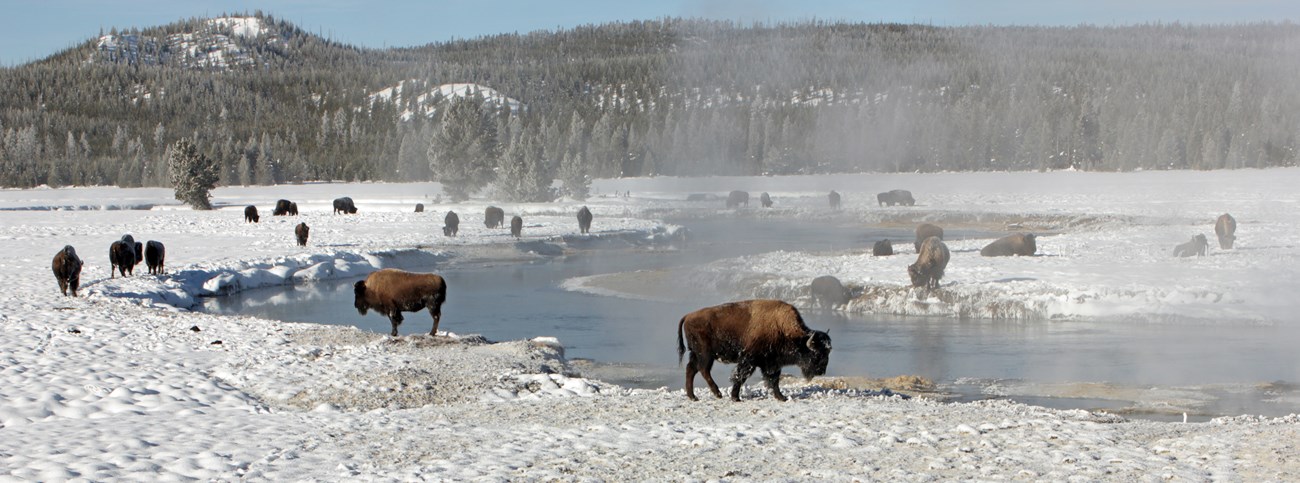Last updated: November 2, 2017
Article
Bison Bellows: Not Always Everywhere!

NPS Photo.
There will always remain uncertainty about historic temporal and spatial variability of bison occupancy and movement patterns across the full extent of the species historic range. What we do know is that there were regional areas within the historic range where:
- Bison were continually present over long periods of time,
- Bison likely occurred at low densities,
- Bison were known to have been present, but then were followed by prolonged absences before reoccurring or remaining absent.
Examples of naturally occurring local and regional bison extirpation are evident in the historical and archeological literature. For example, ecological and archeological evidence suggests that periodic extensive drought resulted in multiple intervals spanning decades and centuries, when bison were almost totally absent regionally from the southern plains, with two major periods of absence between BC 5000-2500 and between AD 500-1300. There is compelling evidence that aboriginal peoples also interacted with environmental drivers and stressors to have a strong role in local and regional spatio-temporal distribution and abundance of bison across the historic range.
A more contemporary example of regional extirpation occurred in July of 1842 when Charles Fremont's exploration encountered bison along the shortgrass plains of the Rocky Mountain front. He then continued north along the Cache LaPoudre River (in what is now northern Colorado) into the Laramie high plains nestled between the Medicine Bow Mountains and the Laramie Range (in what is now southeast Wyoming) and encountered a very large regional landscape void of bison and other wildlife like pronghorn antelope. Bison were known to have previously occupied the Laramie high plains, and their bones can still be occasionally found in the surrounding high country.
Fremont later reported that "Everywhere the soil looked parched and burnt; the scanty yellow grass crisped under the foot, and even the hardiest plants were destroyed by want of moisture" and his contact with disparate small bands of Crow Indians who were hunting indicated "that bison were very scarce, and little to no grass to be found." The relatively rapid disappearance of bison from the several thousands of square miles of the Laramie high plains is suggested in response to severe drought combined with swarming grasshoppers, so that by the time Fremont arrived, there was "No grass, no buffalo - food for neither horse nor man." Thus, in response to natural environmental forces in conjunction with environmentally stressed people, by the early 1840s the bison of the Laramie high plains had dispersed or died, ultimately never to return.
A localized example was described by Charles Goodnight how during a drought in 1867, bison gathered on the Colorado River (that drains southeast from out of the Llano Estacado in northwest Texas) and died of starvation by the thousands. He described that while there was good grass on the Rio Concho 30 miles away, the bison had stayed in the Colorado drainage and died en masse. Such variability in temporal and spatial occupancy patterns are thought to have occurred throughout the bison's historic range and these examples speak to the importance of managing landscapes to ideally allow bison (and other wildlife) to move in response to dynamic ecological forces.
Today, human activities limit our opportunities to restore wild bison where they have adequate space to move and be shaped by these evolutionary influences as they had previously endured for millennia. This underscores the value of protecting the handful of large, ecologically intact landscapes that remain both within and at the edges the bison's core historic range in pursuit of the "second recovery" or ecological recovery of wild bison.
